A use case represents an example of how the system could be used.
A use case is modelled in a use case diagram.
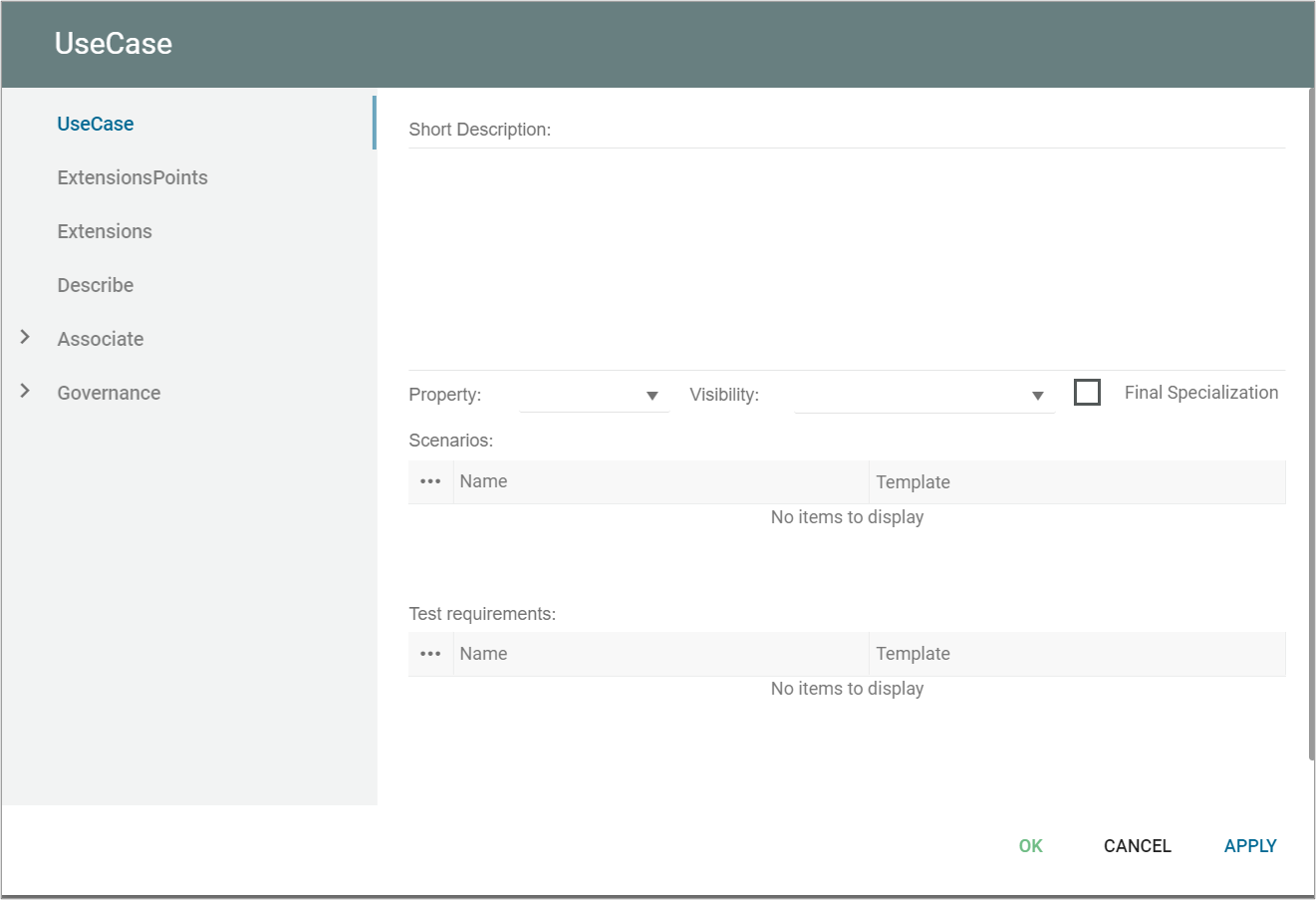
A use case represents an example of how the system could be used.
A use case is modelled in a use case diagram.

A physical element that exists at run time and represents some computational resource.
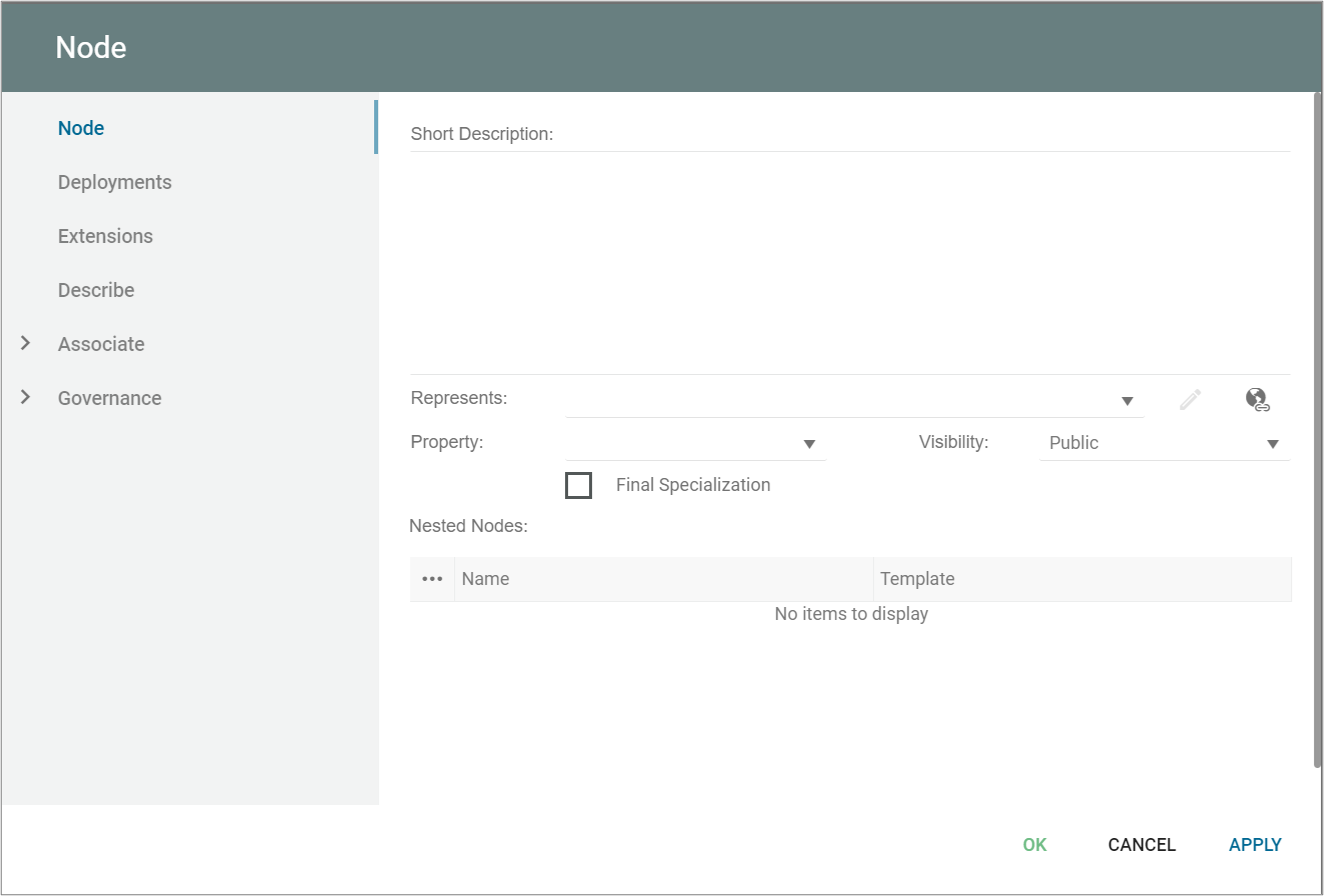 Node properties
Node properties
The Node tab
| Property | Metamodel name | Description |
| Short Description | ShortDescription | |
| Represents | Represents | Links to: ClassDiagram, Interface, ComponentDiagram, Class, Object, Component. |
| Property | Property | Choices are: Root Leaf Abstract |
The Extensions tab
| Property | Metamodel name | Description |
| Stereotype | Stereotype | Links to: Stereotype. |
| Constraints | HasConstraints | Links to: Constraint. |
| Tagged values | HasTaggedValues | Links to: TagDefinition. |
Purpose: The purpose of the Dialog Layout template is to provide a representation of a dialog design for the system developed in the Dialog Model.
Core concerns: The Dialog Layout template enables you to model Windows, Fields, Menu Layouts and General Concepts.
Relation to other templates: The Dialog Layout is a QualiWare system template and is related to the Dialog Model, Menu Layout, Report Layout and Help Model.
Properties and metadata: The Dialog Layout template can for example retain the following information:
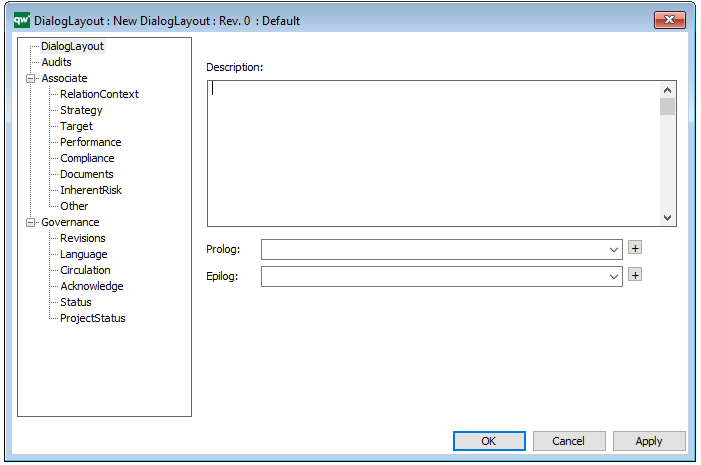
The above picture shows the properties dialogue window for the Dialog Layout template where you can view and edit the model’s properties in QualiWare Lifecycle Manager.
Purpose: The purpose of the Dialog Model is to enable the creation of customized applications for your QualiWare solution that, for example, can generate codes for the Data Model Diagram.
Core concerns: The Dialog Model template enables you to model Dialog Layout, Menu Layout, Report Layout, Help Model and Application Specifiers. These elements can be associated through Connections.
Relation to other templates: The Dialog Model is a QualiWare system template and is related to the Dialog Layout, Menu Layout, Report Layout and Help Model.
Properties and metadata: The Dialog Model template can for example retain the following information:

The above picture shows the properties dialogue window for the Dialog Model template where you can view and edit the template’s properties in QualiWare Lifecycle Manager.
Purpose: The purpose of the Help Model is to provide the structure of a help system for the system developed in the Dialog Model.
Core concerns: The Help Model template enables you to model Help Items and attach them to each other using connections.
Relation to other templates: The Help Model is a QualiWare system template and is related to the Dialog Model, Dialog Layout, Menu Layout and Report Layout.
Properties and metadata: The Help Model template can for example retain the following information:
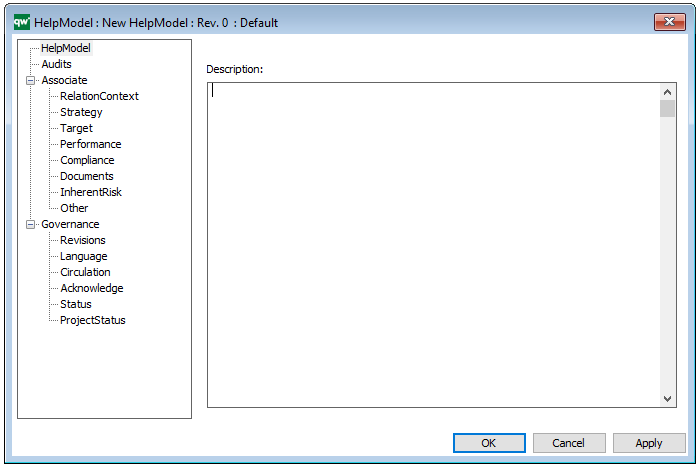
The above picture shows the properties dialogue window for the Help Model template, where you can view and edit the model’s properties in QualiWare Lifecycle Manager.
Purpose: The Purpose of the Menu Layout template is to provide the menu structure for the system developed in the Dialog Model.
Core concerns: The Menu Layout template enables you to model Menu Items which can be connected by containing each other – as is the case with the HTML Mega Menu template.
Relation to other templates: The Menu Layout is a QualiWare system template and is related to the Dialog Model, Dialog Layout, Report Layout and Help Model.
Properties and metadata: The Menu Layout template can for example retain the following information:
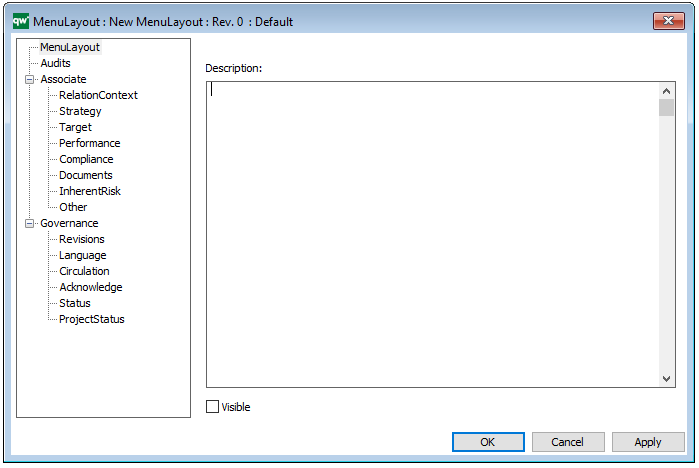
The above picture shows the properties dialogue window for the Menu Layout template, where you can view and edit the template’s properties in QualiWare Lifecycle Manager.
Purpose: The purpose of the Package Diagram is to group elements of a large system and illustrate the dependencies between them.
Core concerns: The Package Diagram can be used to organize a system’s parts and enables you to model Packages, Profiles and Annotations. These can be connected using Dependency, Profile Application, Package Merge, Package Import and Containment.
Below, you can see an example of a Package Diagram for a booking system for a car rental service:

Relation to other templates: The Package diagram offers a simplified view of for example a Class Diagram, grouping classes into packages. It should be used when a class diagram becomes too large and complex to easily read.
Properties and metadata: The Package Diagram template can for example retain the following information:
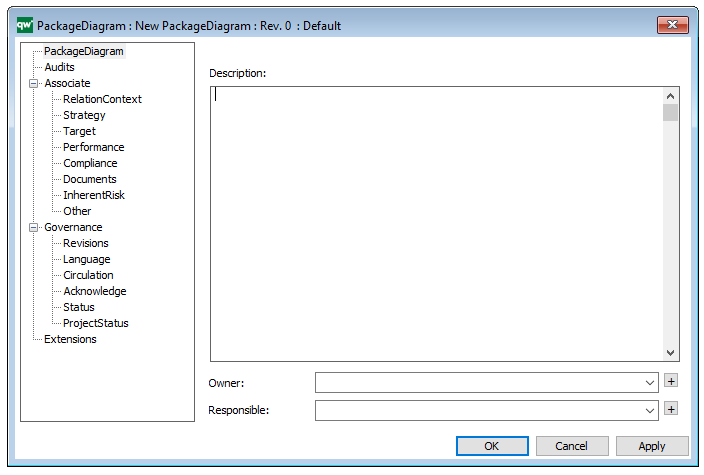
The above picture shows the properties dialogue window for the Package Diagram template, where you can view and edit the diagram’s properties in QualiWare Lifecycle Manager.
Purpose: The purpose of the Structure Chart is to show the physical design of a program. A subroutine or a module.
Core concerns: The Structure Chart template enables you to model Modules and Data Stores. These elements can then be linked by Module Parameters and Connections. The Structure Chart is built as a hierarchy of modules calling each other. The connections are Parameters that are transferred through these calls.
Below, you can see an example of a Structure Chart, where the data flows are illustrated by arrows:
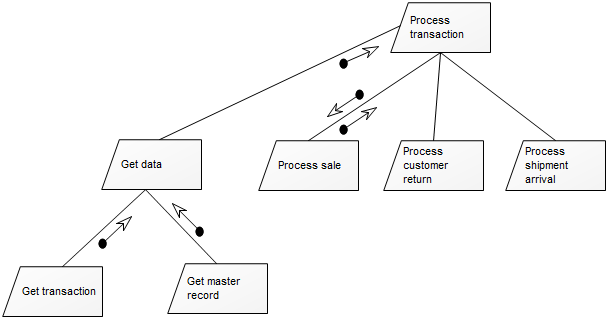
Relation to other templates: The Structure Chart is part of the information domain. As such it is related to, for example, the Data Flow Diagram, Communication Diagram, Data Mapping Diagram, Data Model Diagram, and the Relational Diagram.
Properties and metadata: The Structure Chart template can for example retain the following information:
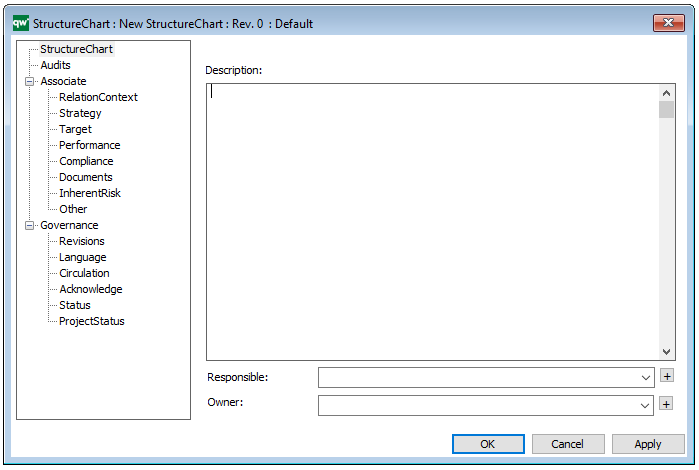
The above picture shows the properties dialogue window for the Structure Chart template, where you can view and edit the Chart’s properties in QualiWare Lifecycle Manager.
Purpose: The purpose of the Use Case Diagram template is to document user interactions in a system context, as well as the context between different cases of user interactions. Below, you can see an example of a Use Case Diagram for the service at a restaurant:
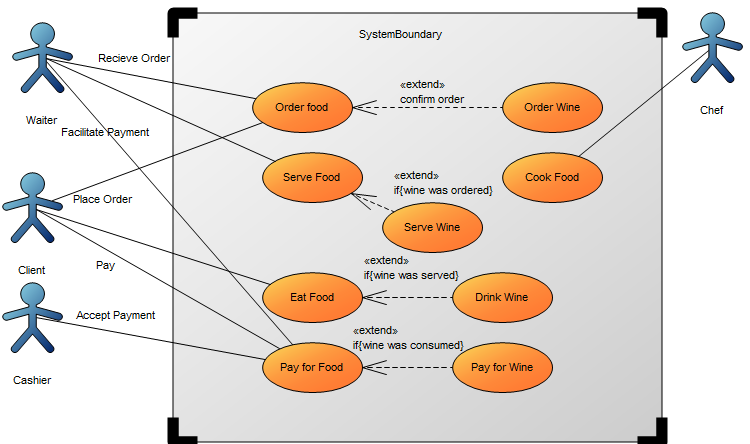
Core concerns: The available objects you have to model use cases include: System Boundary, Actors, Use Cases, and connectors such as Association, Generalization, Include and Extend. Below, you can see an example of a Use Case Diagram for a booking system at a car rental service:
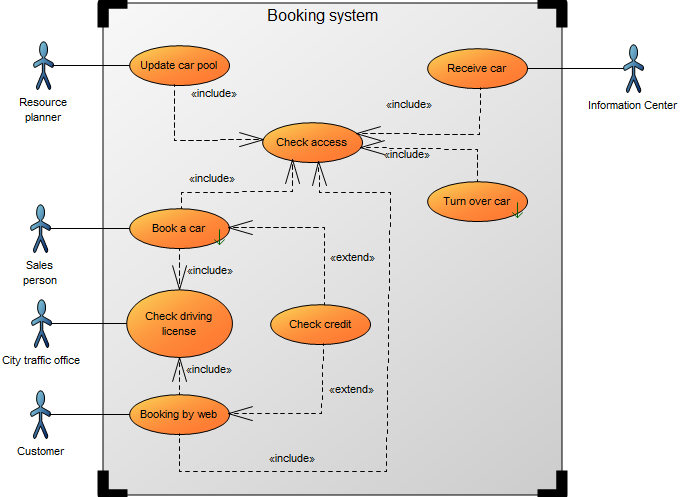
Relation to other diagrams: It is important to break down use cases into other diagrams such as Sequence Diagrams, Communication Diagrams, and Activity Diagrams templates for elaboration.
Properties and metadata: The Use Case Diagram can for example retain the following information:
In the picture below you can see the Use Case Diagram’s properties dialogue window, where the properties can be viewed and edited:
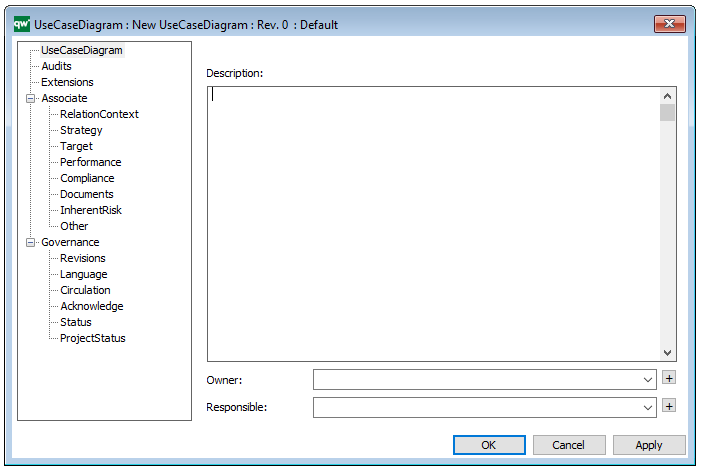
Purpose: The purpose of the State Machine Diagram template is to document the dynamic behavior of a class or an object.
Core concerns: The State Machine Diagram template enables you to model States, Pseudo States, History States, Lines and Annotations. These can be connected by Transitions.
As such, the State Machine Diagram can be used to show the different states of a class or an object and how the class or object responds to various events by changing from one state to another.
Below, you can see an example of a State Machine Diagram for an ATM:
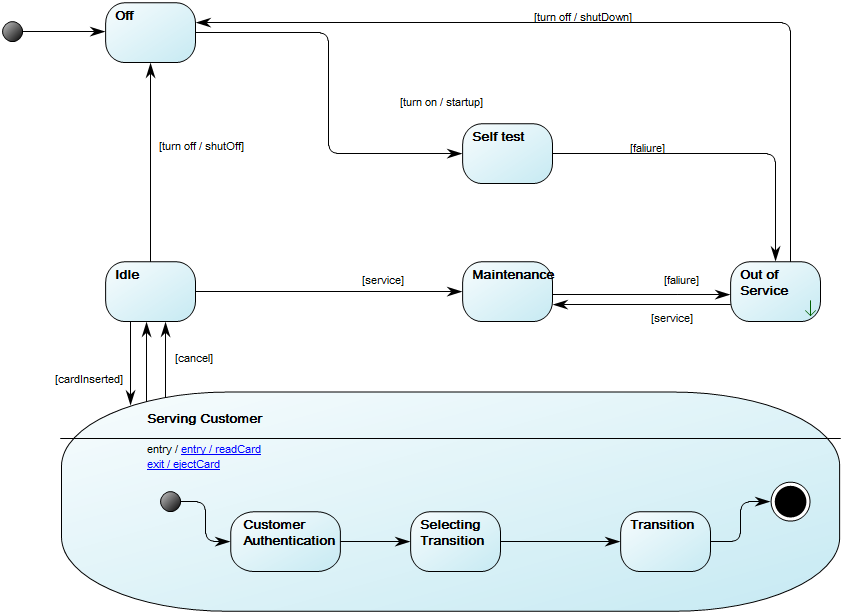
Relation to other templates: The State Machine Diagram can be a decomposition of a State and can also be derived from a Class. The State Machine Diagram template is related to, but cannot replace the State Event Diagram, which is used to document Event States and time dependent behavior of systems.
Properties and metadata: The State Machine Diagram can for example retain the following information:
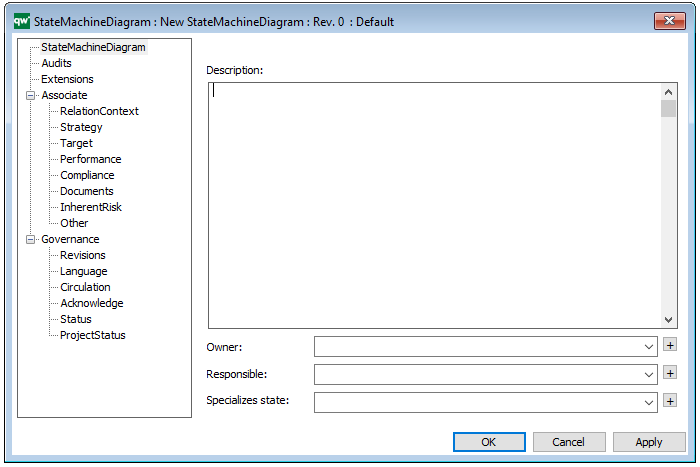
The above picture shows the properties dialogue window for the State Machine Diagram where you can view and edit the diagram’s properties in QualiWare Lifecycle Manager.